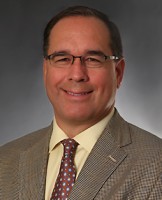There are still many unknowns, but siding and the roof are on order for the frame of the Federal Reserve’s faster-payments project.
That’s the message conveyed Tuesday by Fed officials and payments-industry executives who participated in a years-long effort to speed up U.S. electronic payments as well as make them more secure. The effort crossed two major milestones this summer when the Fed released a final report about 16 proposals reviewed by its Faster Payments Task Force and, earlier this month, issued a paper about tactics it could use to move the initiative along.

One of the tactics in the September paper raised eyebrows by suggesting that the central bank could play a more active role as a service provider rather than just sponsoring working groups and moderating the discussion. While acknowledging that it has no authority to impose its will on the U.S. payments industry, the Fed has set a goal of having some sort of new system in place by 2020.
Asked Tuesday about just what lies ahead, Sean Rodriguez, a Federal Reserve executive vice president and the point man in the payment-system Improvement project, said that matter is on the plate of Dave Sapenaro, the Fed’s new payments strategy director. Sapenaro, who also is first vice president and chief operating officer of the Federal Reserve Bank of St. Louis, succeeds Gordon Werkema, who is retiring.
“Dave is now thinking about how to man the effort for how we’re going to look at and explore Federal Reserve operational roles, or a role, in light of all the progress that’s been made,” Rodriguez said at the Federal Reserve Bank of Chicago’s annual payments conference.
Rodriguez added that Sapenaro will examine if there are “some gaps that perhaps the Federal Reserve might need to fill, either on a short-term basis or a long-term basis, to work toward that 2020 objective.”
Also involved will be a new work group that is expected to be appointed by year’s end. Rodriquez promised the process will be transparent and include input from industry stakeholders. “We’re not going to be going into a smoky board room and say this is what we would do,” he said.
The Fed already is involved in payments operations as one of two nationwide switches for automated clearing house transactions. New York City-based The Clearing House Payments Co. operates the other ACH switch.
Meanwhile, an executive from The Clearing House, which submitted one of the 16 faster-payments proposals, said TCH’s real-time payments platform could be up and running by year’s end. “We are going to be going live very soon,” senior vice president Steve Ledford told the Chicago conference.
Submitted with processor Fidelity National Information Services Inc. (FIS) and relying on technology from Mastercard Inc.’s Vocalink subsidiary, THC’s real-time payments platform got high marks from McKinsey & Co. reviewers the Fed brought in to assess the submissions. Ledford didn’t give specifics about the rollout, but TCH earlier indicated that the first use cases might involve business-to-business and business-to-consumer payments.






